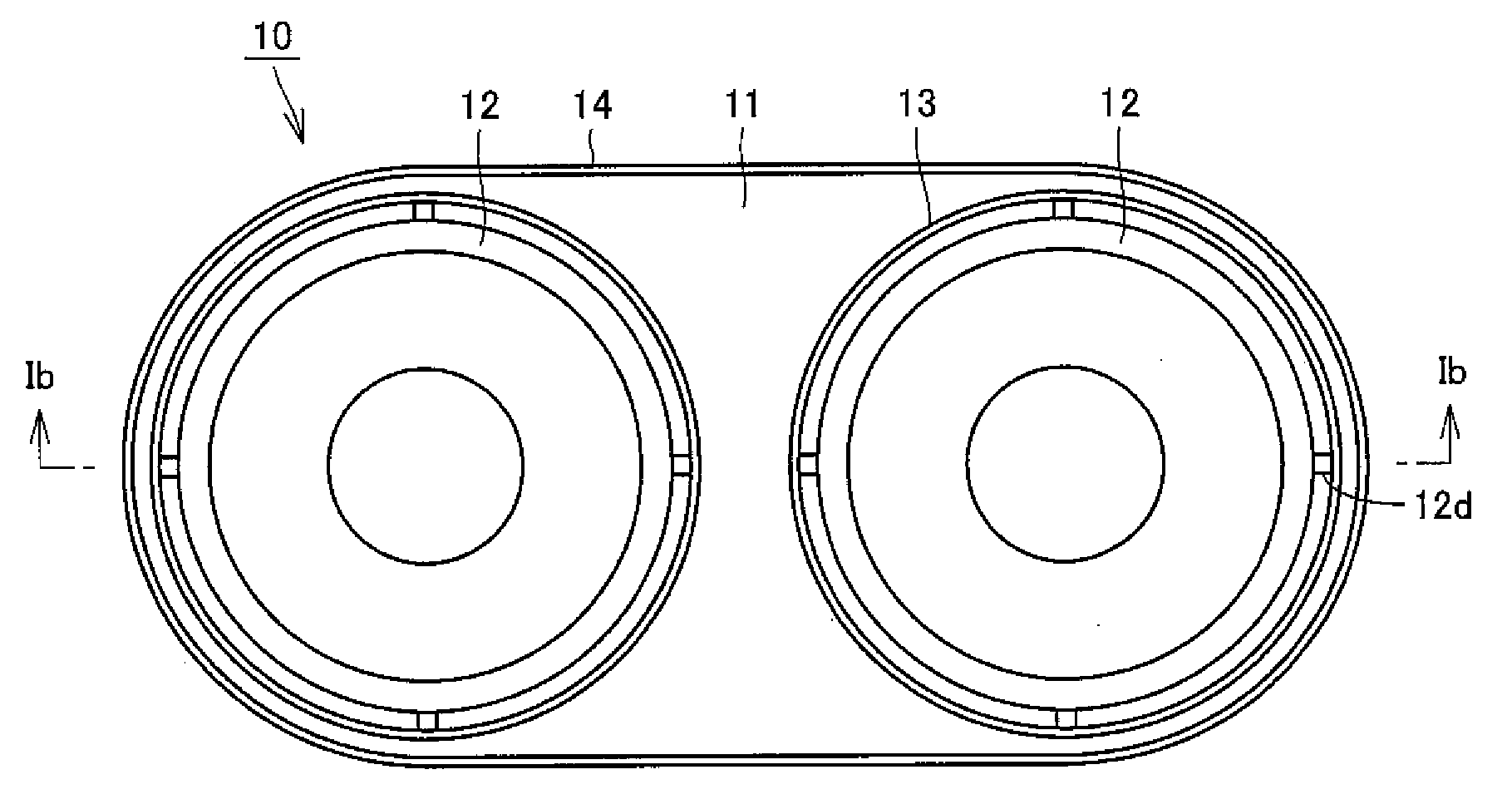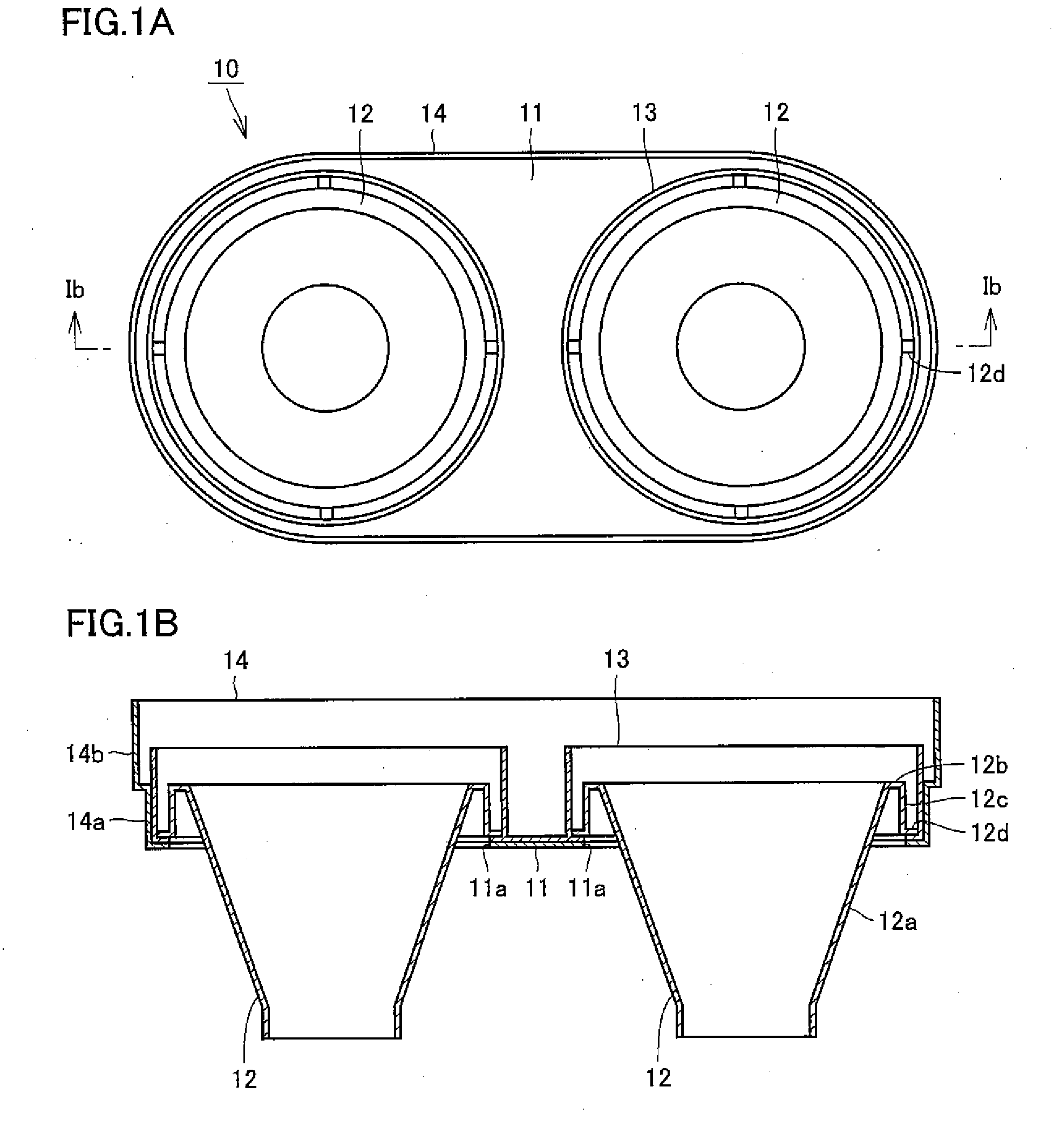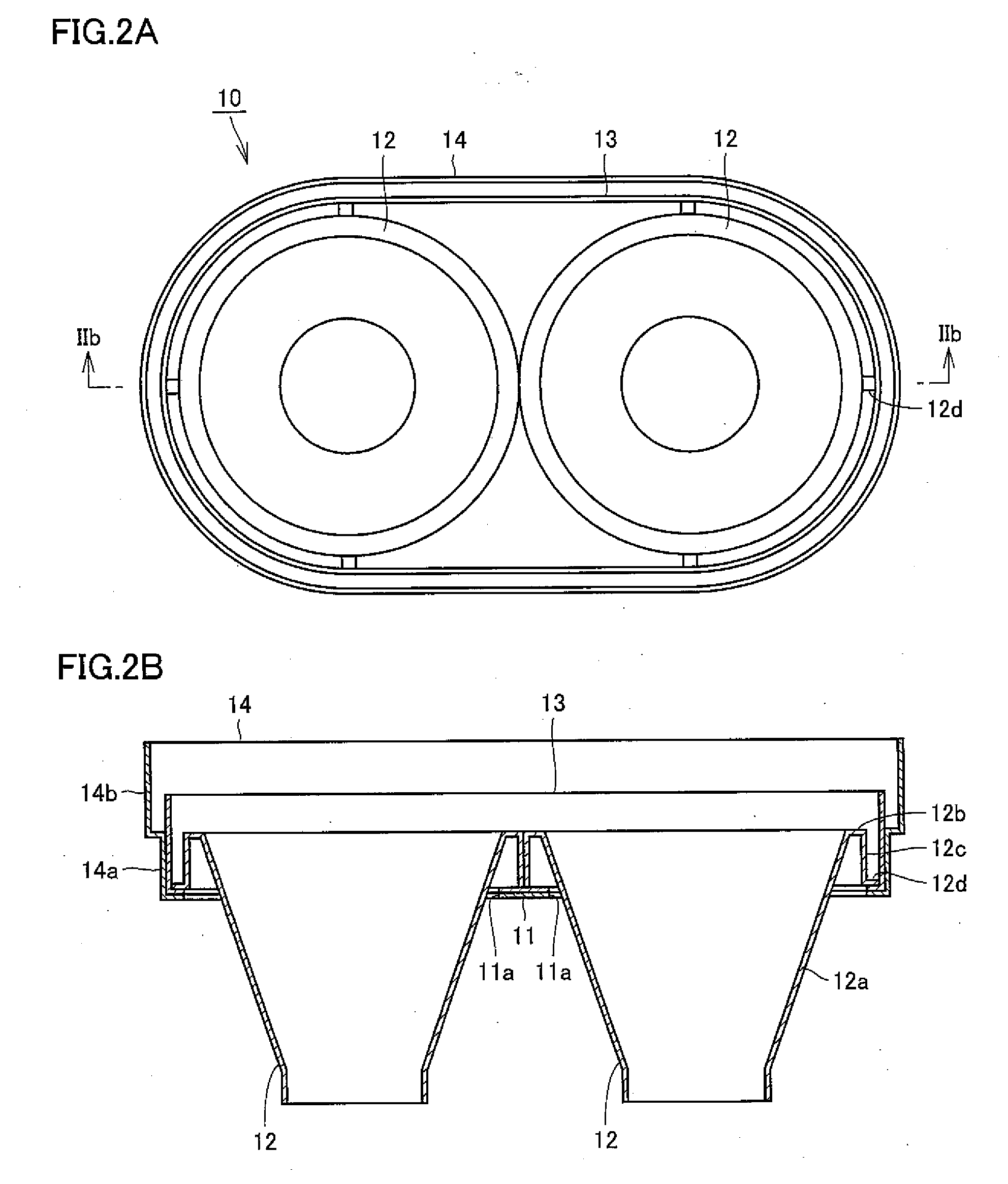Primary radiator, low noise blockdownconverter and satellite broadcasting receiving antenna
a technology of low noise blockage, radiator, applied in the direction of antennas, waveguide horns, electrical devices, etc., can solve the problems of increased investment cost, inability to adapt to changing shape, lack of adaptability, etc., and achieve the effect of reducing the investment cost of dies and changing shap
- Summary
- Abstract
- Description
- Claims
- Application Information
AI Technical Summary
Benefits of technology
Problems solved by technology
Method used
Image
Examples
Embodiment Construction
[0025]In the following, embodiments of the present invention will be described with reference to the drawings. As shown in FIGS. 1A and 1B, a primary radiator 10 according to an embodiment of the present invention includes two openings where sheet metal members are combined to form two horns 12, 12 and first and second corrugated portions 13, 14. In primary radiator 10, second corrugated portion 14 located on the outside is formed of one sheet metal member.
[0026]Specifically, in primary radiator 10 of the present embodiment, two holes are made in an oval base plate 11. The tapered smaller-diameter end of horn 12 is passed through the hole and the periphery of the opening on the larger-diameter side of horn 12 is fixed to the rim of the hole. The horn has a hollow conical main body 12a, and a flange 12b, a cylindrical leg 12c and a receiving piece 12d are formed in one piece to bent from the periphery of the opening on the larger-diameter side. Further, cylindrical first corrugated p...
PUM
 Login to View More
Login to View More Abstract
Description
Claims
Application Information
 Login to View More
Login to View More - R&D
- Intellectual Property
- Life Sciences
- Materials
- Tech Scout
- Unparalleled Data Quality
- Higher Quality Content
- 60% Fewer Hallucinations
Browse by: Latest US Patents, China's latest patents, Technical Efficacy Thesaurus, Application Domain, Technology Topic, Popular Technical Reports.
© 2025 PatSnap. All rights reserved.Legal|Privacy policy|Modern Slavery Act Transparency Statement|Sitemap|About US| Contact US: help@patsnap.com



